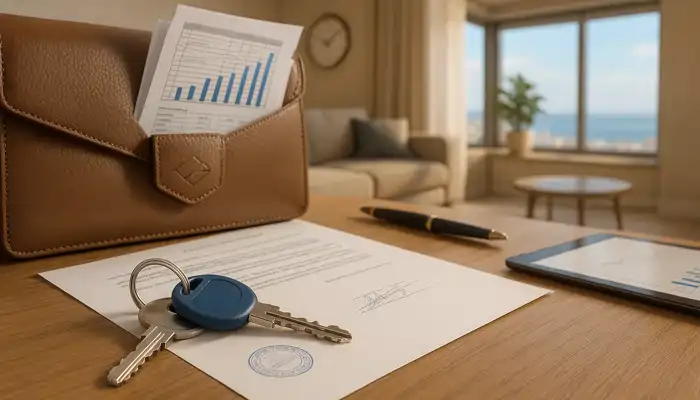Why do you need an energy performance certificate in Spain?
The Energy Performance Certificate (Certificado de Eficiencia Energética) is an official document that confirms the level of energy consumption and carbon dioxide (CO2) emissions of a specific building or individual premises. In Spain, it plays an important role in any real estate transaction: without a certificate, it is impossible to legally sell or rent out a property. The key concern for owners is the risk of a notary refusing to certify the transaction, financial penalties, and wasted time. Potential buyers or tenants, in turn, want to be sure that the costs of electricity, heating, and cooling will not be unreasonably high.
Today, this document has not only informative significance. The better the energy efficiency class, the more favorable the conditions of the “green mortgage”. Furthermore, additional restrictions are expected by 2030 for properties with the least efficient category (G). Accordingly, it is important for owners to take care of obtaining a certificate in a timely manner in order to avoid difficulties with the sale or rental.
When is a certificate required and which properties are exempt?
Mandatory cases
Publishing an advertisement for sale or rent on the largest portals: without indicating the energy efficiency class, the portal may block the publication.
Making a purchase and sale transaction: the notary will not certify the contract if there is no certificate.
Renting out real estate (both long-term and short-term): the certificate must be attached to the contract, and a copy is given to the tenant.
Applying for a “green mortgage” in a bank (a loan with special conditions for class A or B properties): in the absence of a certificate, the financial institution (for example, Banco Bilbao Vizcaya Argentaria) will refuse to issue or will revise the rate.
Obtaining subsidies when carrying out work to improve the energy efficiency of a building: without a valid certificate, the subsidy will not be issued.
Exceptions
Garages, storage rooms, properties planned for demolition or major reconstruction. A certificate is not required for them.
Small properties with an area of up to 50 m2: in some autonomous communities of Spain, this size may be exempt from certification.
Buildings of historical or cultural significance: if improving energy efficiency violates the architectural value, it is sometimes allowed not to obtain a certificate. However, any changes to such properties require careful coordination.
If you bought a property a long time ago and do not plan to sell or rent it out, you do not need to obtain a certificate. But as soon as the need arises for a transaction or subsidies for the installation of solar panels, you should take care of registering the energy document.
Energy efficiency classes: from A to G
In Spain, there are seven energy efficiency classes: A, B, C, D, E, F, and G. They differ in color and the percentage of energy consumption relative to average indicators.
Highly efficient classes (A, B, and C)
A (dark green): the best consumption indicator, not more than 50% of the average level. Often found in new buildings with modern energy-saving technologies.
B (green): consumes up to half the energy compared to a standard property. It can include both new buildings and those that have undergone major renovation.
C (light green): 10–25% more efficient than the average level, usually includes thermal insulation, solar panels, and high-quality climate control equipment.
Medium and low levels of energy efficiency (D, E, F, and G)
D (yellow): the indicator is often found in houses of medium age. There may be double glazing, basic thermal insulation. Usually, consumption is 10% lower than average.
E (light orange): the most common class in Spain (more than 70% of housing). This is the standard average consumption level.
F (dark orange): 25% more than the average level of energy consumption, most often typical for houses over 40 years old, with worn-out heating systems.
G (red): properties with the worst energy efficiency, often require complete reforms to achieve an acceptable level. It is expected that by 2030, restrictions will apply to such properties during sale and rental.
How to obtain an energy performance certificate
Main procedure
Step 1. Find a technical specialist. You can contact the Association of Architects, Builders, or find a certified technician on the Internet.
Step 2. Request a quote and arrange a visit. A personal inspection of the property is required.
Step 3. Conduct an energy audit. The specialist examines the thermal protection of the building, heating, air conditioning, and other parameters to calculate CO2 emissions and energy consumption levels.
Step 4. Receive a report and recommendations. Officially recognized software from the Ministry of Industry is used for calculations. The report will contain recommendations for improving the energy efficiency class.
Step 5. Registration. After registration in the registry, the owner receives the original certificate.
Validity period and renewal
In most cases, the certificate is issued for 10 years. For class G, the validity period is reduced to 5 years to motivate the owner to undertake energy modernization. If major reforms have been carried out in the building to improve thermal characteristics, it makes sense to obtain a new certificate to reflect a higher class and simplify further transactions.
Cost and penalties
The price of certification depends on the area and region, on average ranging from 60 to 130 euros for apartments (50–100 m2) and 200–300 euros for large villas. Additionally, in some autonomous communities, a fee of 5–15 euros is paid. A common benchmark is 1.5 euros per m2.
Minor infringements (fine from 300 to 600 euros): non-compliance with minimum requirements (for example, lack of class data in the advertisement).
Serious infringements (fine from 601 to 1000 euros): failure to provide the certificate to the buyer or tenant.
Very serious infringements (fine from 1001 to 6000 euros): deliberate forgery or complete absence of the document during the sale.
Additional aspects: ITE and global certifications
For apartment buildings, an ITE (Inspección Técnica de Edificios) may also be required, which is carried out every 10 years (the exact deadlines are determined by the autonomous community). When selling an apartment, it is sometimes necessary to show that the building has passed a technical inspection. In addition, international certificates LEED (Leadership in Energy and Environmental Design), BREEAM (Building Research Establishment Environmental Assessment Method), and “Passive House” (a concept for buildings with almost zero energy consumption) are gaining popularity in European countries. However, in Spain, for most transactions, the national energy performance certificate remains the decisive document.
Conclusion
The energy performance certificate in Spain is a mandatory element of any legal real estate transaction. Owners who obtain the document in a timely manner reduce the risk of fines, gain access to “green mortgages”, and also increase the attractiveness of their housing on the market. Buyers, in turn, can assess possible energy costs and plan modernization in advance. Considering that additional restrictions may appear for class G buildings by 2030, it is worth taking care of a higher level of energy efficiency in advance. This way, you will preserve both the value of the property and your own peace of mind.








